The acquisition of the Russian Sukhoi Flanker series fighter aircraft has been an important part of China’s effort to modernise its air power. Between 1992 and 2004, China received a total of 176 examples of the Flanker series fighter in four variants: Su-27SK (Flanker-B), Su-27UBK (Flanker-C), Su-30MKK (Flanker-G) and Su-30MKK2 (Flanker-G). Another 100 examples of the Su-27SK have been built by Shenyang Aircraft Corporation (SAC) under license as the J-11.
Chinese aviation industry has been building Flanker fighters domestically without Russian support since 2002. These aircraft are identical to their Russian counterparts in airframe, but their avionics and weapon systems are completely Chinese-made. China has also been trying to develop an indigenous turbofan jet engine to replace the Russian AL-31F used on the original Flankers, but this effort has only been partially successful.
So far the reverse-engineering of the Flanker fighters has produced at least five “cloned” Flanker variants: J-11B, J-11BS, J-15, J-15S, and J-16. The J-11B and BS variants were derivatives of the Su-27SK and UBK respectively. The J-15 and J-15S were developed from a Su-33 (Flanker-D) prototype. The J-16 is believed to be a derivative of the Su-30MKK.
Key Data
Russian variants:
| Su-27SK | Su-27UBK | Su-30MKK | Su-30MKK2 | |
| Number in service | 36 | 40 | 76 | 24 |
| Designer | Sukhoi | Sukhoi | Sukhoi | Sukhoi |
| Manufacturer | KnAAPO | IAPO | KnAAPO | KnAAPO |
| Maiden flight | 1981 | 1985 | 1999 | ? |
| IOC | 1992 | 1992 | 2000 | 2004 |
| Crew | 1 | 2 | 2 | 2 |
| Role | Air superiority | Air superiority/ training | Multirole | Multirole |
| In-flight refuelling | No | No | Yes | Yes |
Chinese variants:
| J-11 | J-11B | J-11BS | J-15 | J-15S | J-16 | |
| Number in service | 100 | Unknown | Unknown | ~10 | None | None |
| Designer | Sukhoi | Shenyang | Shenyang | Shenyang | Shenyang | Shenyang |
| Manufacturer | Shenyang | Shenyang | Shenyang | Shenyang | Shenyang | Shenyang |
| Maiden flight | 1999? | 2002? | ? | 2009 | 2012 | 2011 |
| IOC | 2002 | ? | ? | 2013 | ? | ? |
| Crew | 1 | 1 | 2 | 1 | 2 | 2 |
| Role | Air superiority | Multirole | Multirole | Multirole | Multirole | Multirole |
| In-flight refuelling | No | No | No | Yes | Yes | Yes |
Su-27SK/UBK Flanker-B/C
The Su-27 front-line fighter first entered operational service with the Soviet Air Force in the early 1980s and was promoted to the international market by a cash-hungry Russia in the early 1990s. The single-seat fighter version Su-27SK (NATO reporting name: Flanker-B) was manufactured by KnAAPO at Komsomolsk-na-Amur. The two-seater fighter-trainer version Su-27UBK (NATO reporting name: Flanker-C) was manufactured by IAPO at Irkusk.
High-level negotiations between Beijing and Moscow over a possible fighter deal began in 1990. Russian pilots demonstrated aircraft in Beijing in March 1991. A contract was signed in 1991 to acquire 26 Su-27 fighters, including 20 single-seat Su-27SKs and 6 two-seater Su-27UBKs, along with unknown numbers of the R-27 (AA-10 Alamo) medium-range air-to-air missile and R-73 (AA-11 Adder) short-range air-to-air missile. The delivery of these aircraft and missiles was completed by 1992, making China the first non-CIS country to operate the Su-27. These aircraft were deployed by the PLAAF 3rd Air Division based at Wuhu AFB, Anhui Province.
In 1995, China ordered a second batch of 22 Su-27s (16 SKs and 6 UBKs) in a deal worth about US$710 million. In reporting to the United Nations, both China and Russia confirmed that the transfer of 22 aircraft took place in 1996. A Russian source noted that China requested special modifications for its aircraft, which included strengthened landing gear to enable the aircraft to carry its designed fuel load and enable its intended 1,400 km combat radius. These aircraft are operated by the PLAAF 2nd Aviation Division based at Suixi AFB, Guangdong Province.
To address the shortage of suitable training aircraft in the PLAAF for Su-27 pilot training, China ordered the third batch of 28 Su-27s, all in the two-seater UBK fighter-trainer variant, in 1999. These aircraft were delivered to the PLAAF in 2002 and were operated by the PLAAF 33rd Air Division based at Baishiduo AFB, Chongqing.
The Su-27 was the first PLAAF fighter aircraft capable of competing with modern Western fighters. The aircraft was demonstrated to the public for the first time during the 1996 PLA exercise to intimidate Taiwan, when China Central Television broadcasted images of PLAAF Su-27s flying in four-plane formation and attacking ground targets with unguided bombs and rockets. Later in the summer of 1999, Suixi-based Su-27s also flew round-trip missions over the Taiwan Strait during the PLA joint exercises.
The limitations of the Su-27, however, soon became apparent to the PLAAF. As a single mission air superiority fighter, it could only perform secondary attack missions, and only with “dumb” munitions that include a range of free-fall bombs and unguided rockets. Using such munitions in combat unnecessarily exposes the expensive fighter to enemy air defence systems. This later led to the decision to purchase the Su-30MKK (Flanker-G).
J-11
After China expressed its interest in a licensed co-production of the Su-27, in 1996 Sukhoi Company (JSC) and Shenyang Aircraft Corporation (SAC) entered into a contract worth US$2.5 billion to build 200 examples of the Su-27 locally under the designation J-11. Under the terms of the agreement, Sukhoi/KnAAPO would supply aircraft kits to be assembled in SAC. Russia was also responsible for supplying the avionics suite and AL-31F turbofan engines for the J-11 production.
The first kit-built J-11 rolled out in December 1998, but full-scale production did not commence until 2000 due to technical issues. Russian sources confirmed that 48 aircraft had been produced by 2002, and another 48 between 2002 and 2003. However, SAC hinted as early as 2000 that not all 200 J-11s would be built. In November 2004, Russian media reported that the J-11 production had stopped after about 100 examples were built. According to the report, the Chinese side had requested Sukhoi Company to stop deliveries of the assembly kits. The report citing a source within the PLAAF suggested that the basic variant Su-27SK/J-11 no longer met the PLAAF requirements.
A number of reasons may have contributed to the stop of the J-11 production. Firstly, the co-production agreement did not include the transfer of avionics and engine technologies, and the Chinese-built J-11 would have to continue relying on Russia to supply these systems. Secondly, the Russian-made fire-control system was not compatible with Chinese missiles. As a result, the PLAAF had to import additional R-27 (AA-10) MRAAMs and R-73 (AA-11) SRAAMs from Russia to support the operations of its J-11s. Thirdly, as a single mission air superiority fighter, the Su-27SK/J-11 could only perform secondary attack missions, and only with “dumb” munitions such as free-fall bombs and unguided rockets.
J-11B/BS
Sukhoi attempted to market a multirole fighter version Su-27SKM to China as an alternative to the original Su-27SK, but China rejected the offer in favour of an ‘indigenised’ version of the J-11 with much greater Chinese-made content. In mid-2002, SAC unveiled a J-11 mock-up which carried various types of Chinese air-to-air and air-to-surface missiles. Russian sources also confirmed that SAC was developing a multirole variant of the J-11, designated J-11B.
The first J-11B powered by indigenous WS-10A turbofan engines made its maiden flight in 2004. Three examples were subsequently delivered to the China Flight Test Establishment (CFTE) for further test and evaluations. The aircraft entered batch production and operational service with the PLAAF in late 2007.
The J-11B was based on the Su-27SK/J-11 airframe, but with the following modifications:
- An indigenous multifunctional pulse-Doppler fire-control radar reportedly capable of tracking 6~8 targets and engaging 4 of them simultaneously;
- An indigenous digital flight-control system;
- A Chinese copy of the Russian OEPS-27 electro-optic search and tracking system;
- A strapdown INS/GPS navigation system;
- A ‘glass’ cockpit featuring four colour multifunctional displays (MFD) and a wide-angle holographic head-up display (HUD);
The aircraft could carry the Chinese-made PL-8 IR-homing SRAAM and PL-12 active radar-homing MRAAM for air-to-air combat. While the PLAAF currently has the capability for two-target engagement using the Su-27/-30 and R-77 (AA-12 Adder) combination, successful integration of the PL-12 on the J-11B would likely provide a genuine multi-target engagement capability. The J-11B is also expected to have enhanced air-to-surface attack capabilities with the indigenous precision strike ammunitions such as LT-2 laser-guided bomb, the LS-6 precision-guided glide bomb, the YJ-91 (Kh-31P) anti-radiation missile, and the KD-88 air-to-surface missile.
During the 6th Zhuhai Air Show held between 31 October and 5 November 2006, China revealed first official details about the indigenously developed FWS-10A ‘Taihang’ turbofan engine. The engine had already been successfully tested on a modified Su-27SK fighter and possibly on some J-11 airframes too. The engine is understood to be similar to the Russian Lyulka-Saturn AL-31F turbofan engine in both technology and performance. However, it is unclear whether the FWS-10A has already been fitted on the ‘indigenised’ variant of the J-11.
Su-30MKK/MKK2 Flanker-G
The Sukhoi Su-30MKK (NATO reporting name: Flanker-G) is a two-seat multirole fighter aircraft derived from the Su-27 Flanker. The aircraft was developed by Russian Sukhoi Design Bureau and built by KnAAPO in Komsomolsk-na-Amur (KnAAPO). The aircraft can trace its origin to the Su-27PU, a two-seater long-range interceptor fighter / airborne command post aircraft introduced in 1989 as an upgraded variant of the original Su-27 Flanker for the Soviet PVO. After the collapse of the Soviet Union, Sukhoi developed a multirole fighter designated Su-30M in the early 1990s but received no order from the Russian Air Force. Forced to turn to the export market, Sukhoi developed the Su-30MK (Modernizirovannyi Kommercheskiy = “Modernized Commercial”) in 1994.
Negotiations between China and Russia over the purchase of the Su-30MK began in 1996. Sukhoi Design Bureau started work to produce a Su-30-based two-seat attack aircraft designated Su-30MKK (Modernizirovannyi Kommercheskiy Kitayski = “Modernised Commercial for China”) in 1997, with A.I. Knyshev appointed as the chief designer for the project. Under the agreement, Komsomolsk-on-Amur production plant (KnAAPO) was chosen as the primary contractor to build the aircraft. The contract of purchasing 38 Su-30MKK aircraft valued at about US$2 billion was officially signed in August 1999.
The Su-30MKK had adopted some matured designs of previous Flanker fighters, including the centre wing section, wing panels, air intakes, tail beams, fins and landing gear of the Su-27M single-seat fighter and the tail-end fuselage assemblies of the Su-27SK Flanker-B. This approach allowed the development time to be reduced significantly. The prototype planes were made in Komsomolsk-on-Amur in 1998-99, and the aircraft made its maiden flight successfully on 20 May 1999. Four pre-production examples were handed for testing and evaluation between 1999 and 2001. The Su-30MKK prototype ’502 Blue’ was first demonstrated during the 2000 Zhuhai Air Show.
The first 10 production examples of the Su-30MKK were delivered to the PLAAF in December 2000, followed by a second batch of 10 examples on 21 August 2001, and a third batch of 18 examples in December 2001. These aircraft were shared between the PLAAF 3rd Air Division / 9th Fighter Regiment based at Wuhu AFB, Anhui Province and the PLAAF Flight Test & Training Base at Cangzhou AFB, Hebei Province, each with 19 examples.
In July 2001, during a visit to Moscow by the then Chinese President Jiang Zemin, a new contract was signed with the KnAAPO to supply an additional 38 Su-30 MKK fighters. These aircraft were delivered in 2003, with 19 examples operated by the PLAAF 18th Air Division based at Datuopu AFB, Changsha, Hunan Province and 19 examples by the PLAAF 29th Air Division based at Quzhou AFB, Zhejiang Province.
Development of the further improved Su-30MKK2 began at Sukhoi around early 2002. Compared to the MK version, the MKK2 variant features an improved precision-attack capability and an entirely new C4ISTAR (command, control, communications, computers, intelligence, surveillance, target acquisition and reconnaissance) suite. The aircraft’s new N001VEP fire-control radar was specifically modified to launch the Kh-31 (NATO reporting name: Kh-17A Krypton-A) long-range supersonic anti-ship missile.
In January 2003, China signed the contract with Russian Rosoboronexport for the purchase of the third batch of 24 Su-30MKK2 fighters. Specially tailored to meet the requirements of the PLA Naval Air Force, the Su-30MKK2 featured enhanced anti-ship strike capability. The first batch of 12 examples was delivered in February-March 2004, followed by the second batch of 12 examples in August 2004. These aircraft were deployed by the PLANAF 4th Division / 10th Fighter Regiment based at Feidong AB, Zhejiang Province.
The Su-30MKK is PLA’s first ‘true’ multirole fighter with both ‘beyond-visual-range’ air-to-air and precision strike capabilities. The aircraft can deliver a range of precision-guided munitions such as the Kh-29 and Kh-59 air-to-surface missiles, Kh-31P anti-radiation missile, and the TV-guided bombs. For air-to-air combat, the aircraft is equipped with Russia’s latest Vympel R-77 (NATO codename: AA-12 Adder) active radar-homing medium-range air-to-air missile (MRAAM). Additionally, the aircraft is also fitted with sophisticated electronic countermeasures (ECM) and C4ISR suites for target acquisitions and weapon guidance.
J-15/S
The J-15 is a carrier-based multirole fighter developed for the PLA Navy. The aircraft is largely based on the J-11, but with features of the Su-33 (Flanker-D) carrier-based fighter, including the additional pair of forward canards to reduce the take-off distance and improve manoeuvrability, power-aided folding wings and horizontal tailfins, strengthened landing gears with twin nose wheels, an arresting hook, and a shortened tail-cone.
China initially attempted to purchase two examples of the Su-33s for US$100 million from Russia in 2006 for evaluation and training, and possibly to be used for reverse-engineering. After the negotiations broke down, China instead obtained an example of the Su-33 prototype (T-10K) from Ukraine. The aircraft was studied extensively by Chinese engineers for the design and development of the country’s own carrier-based fighter J-15.
The J-15 made its maiden flight in August 2009. The first take-off from a land-based ski-jump took place in May 2010. At least three examples of the prototype aircraft have been produced for Chinese naval pilots to practice take-off and landing from a land-based simulated carrier deck in northern China. In August 2012, the Chinese military announced that its pilots had successfully taken off and landed on its aircraft carrier Liaoning.
The J-15 is expected to enter limited batch production from late 2013. A two-seater fighter-trainer variant may also be under development. The Air Wing of China’s first aircraft carrier Liaoning will include a squadron of 24 J-15s for both air defence and ground strike roles.
In addition, a two-seater fighter-trainer variant debuted J-15S is currently under development at Shenyang. Unlike the Russian Su-33KUB carrier-based fighter-trainer, which features a unique ‘side-by-side’ seating arrangement, the J-15S has adopted a more conventional tandem seating.
J-16
Shenyang has been developing a derivative of the Su-30MKK (Flanker-G) two-seat multirole fighter-bomber since 2010, with the first flight possibly taking place in late 2011. Two pre-production examples have been undergoing flight test since early 2013. The aircraft may enter operational service with the PLAAF in 2014.
The J-16 features many designs on the Su-30MKK, including a retractable in-flight refuelling probe, with comparable performance. Like other Chinese-developed Flanker derivatives, the J-16 is expected to be equipped with Chinese indigenous avionics, possibly including an AESA fire-control radar, improved glass cockpits, and electronic countermeasure (ECM) suite.http://sinodefence.com/
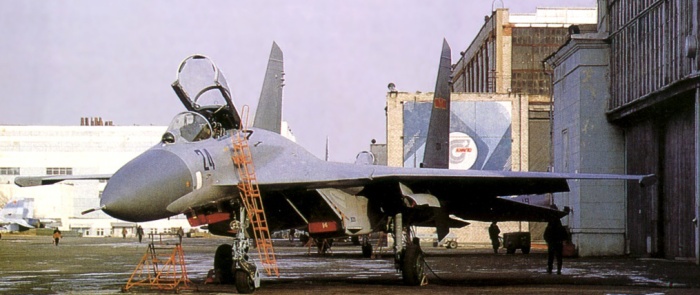
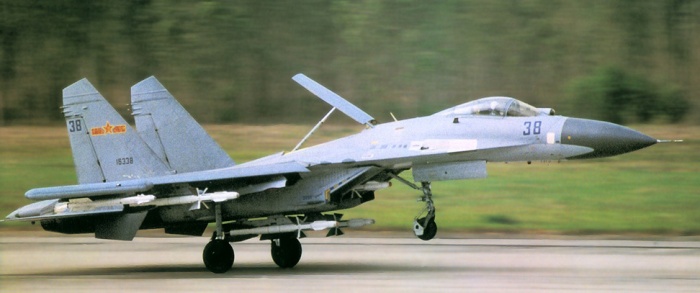
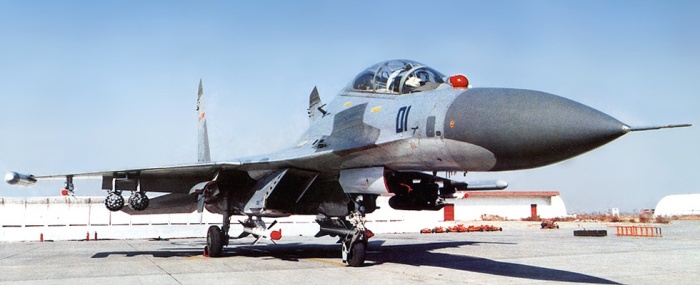
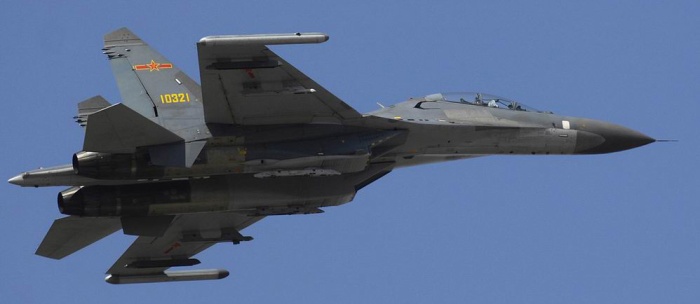

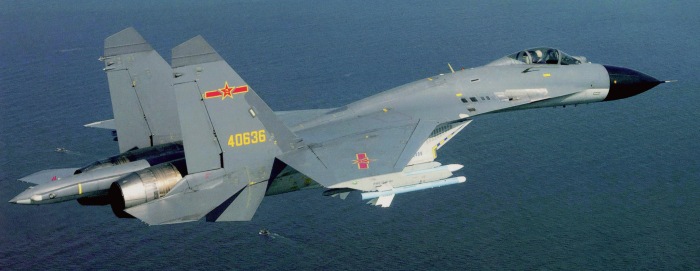
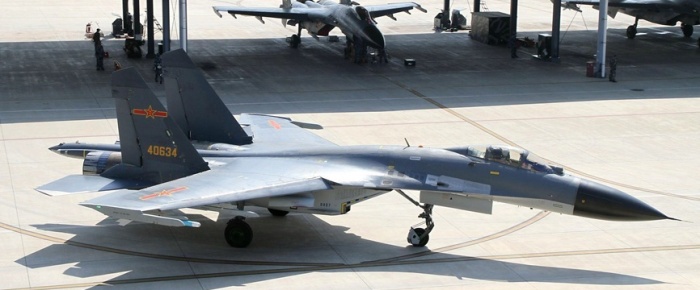
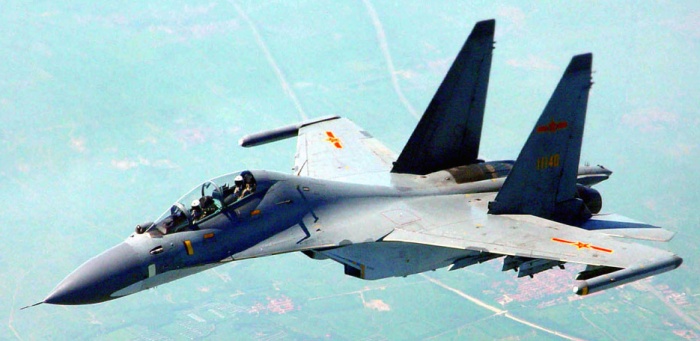
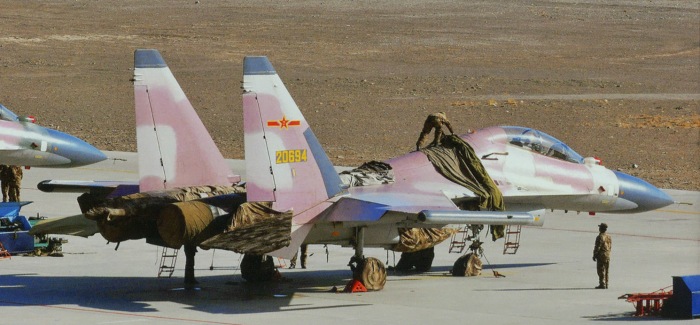
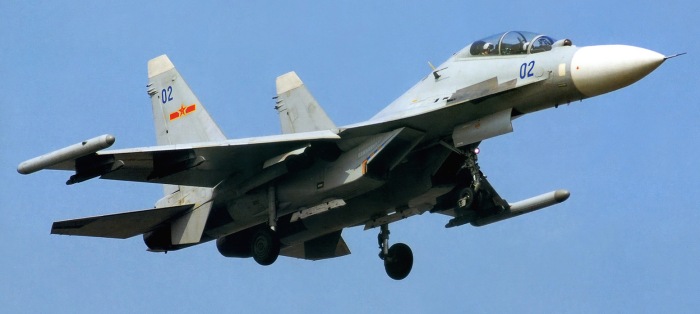
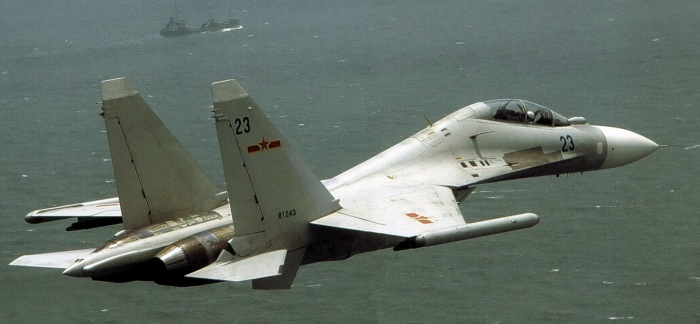
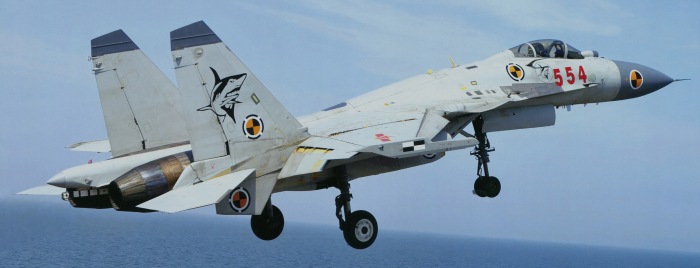
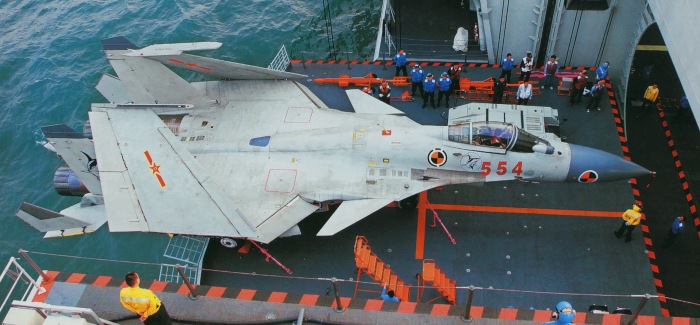
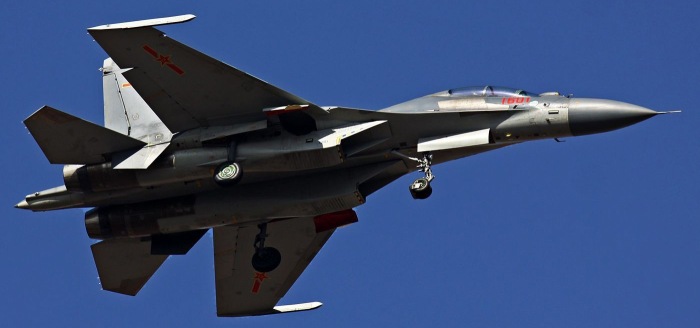
No comments:
Post a Comment